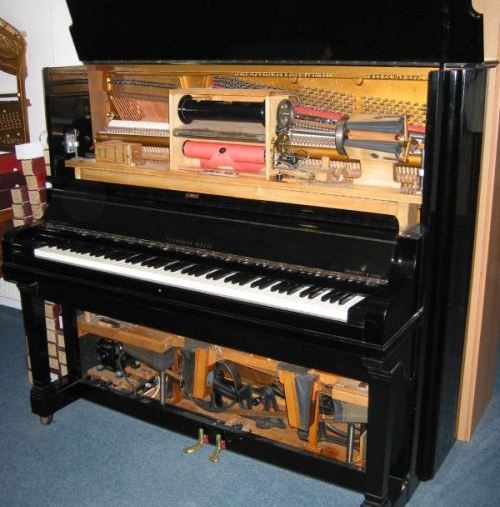Pianola Museum, Amsterdam
The Pianola Museum is a small museum dedicated to pianolas (automatic pianos) and pianos.

The Pianola Museum is a small museum dedicated to pianolas (automatic pianos) and pianos. See the various instruments on display, and learn how they function on music rolls. You can even catch a concert here.
Hours
Sun
14:00
17:00
Mon
NA
Tue
NA
Wed
NA
Thu
NA
Fri
NA
Sat
NA
Pianola Museum and Nearby Sights on Map

Anne Frank House
The famous Anne Frank House is where the Jewish girl Anne Frank wrote her moving diary while hiding with her family from the Nazis

Noorderkerk
The 17th-century Noorderkerk in the Jordaan neighborhood was one of the first Protestant churches built after the Reformation in Amsterdam

Westerkerk
The Westerkerk (Western Church) on the banks of the Prinsengracht is the largest church in Amsterdam

Brouwersgracht
Brouwersgracht, the Brewers' Canal, is one of the most beautiful canals in Amsterdam

Homomonument
The Homomonument is a memorial to homosexuals persecuted and murdered in World War II, consisting of three 10m x 10m x 10m equilateral triangles of pink granite, representing the pink badges that gay men were forced to wear by the Nazis

Houseboat Museum
Located on the Hendrika Maria, a 1914 barge converted into a houseboat on the Prinsengracht, the Houseboat Museum shows you life aboard a typical vessel in Amsterdam
Nationaal Brilmuseum en Brillenwinkel
The list of unique museums in Amsterdam keeps getting longer

De Negen Straatjes
De Negen Straatjes is a neighborhood comprising 9 side streets of the Prinsengracht, Keizersgracht, Herengracht and Singel in central Amsterdam, lined with boutiques, designer outlets, antique stores, and jewelers, making it a favorite with shoppers

Prinsengracht
Prinsengracht or Prince's Canal, named after the Prince of Orange, is the longest of the main canals in Amsterdam

The Jordaan
Originally created in the 17th century for the working class and immigrants as part of Amsterdam's Derde Uitleg expansions, the central neighborhood of Jordaan became gentrified in the 20th century to become one of the most posh districts in the city